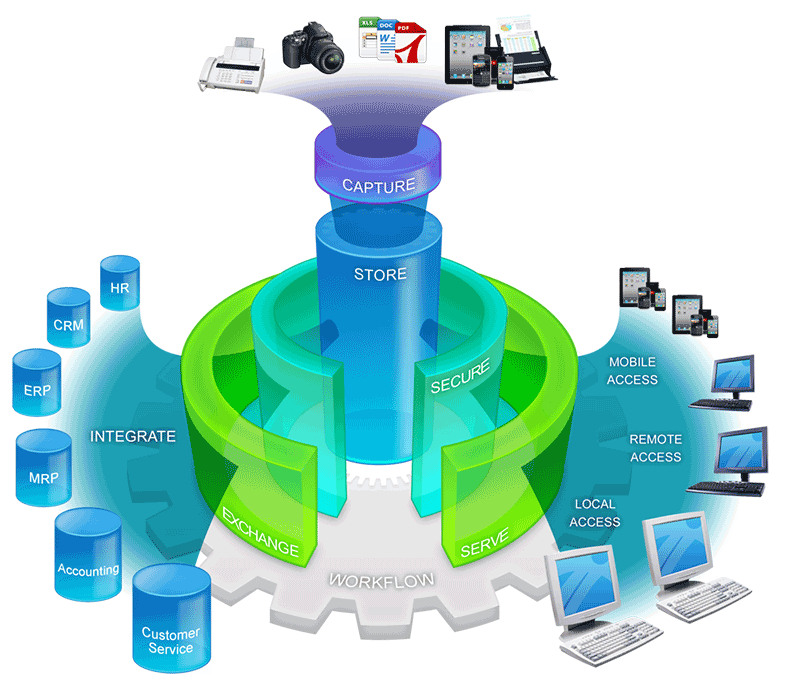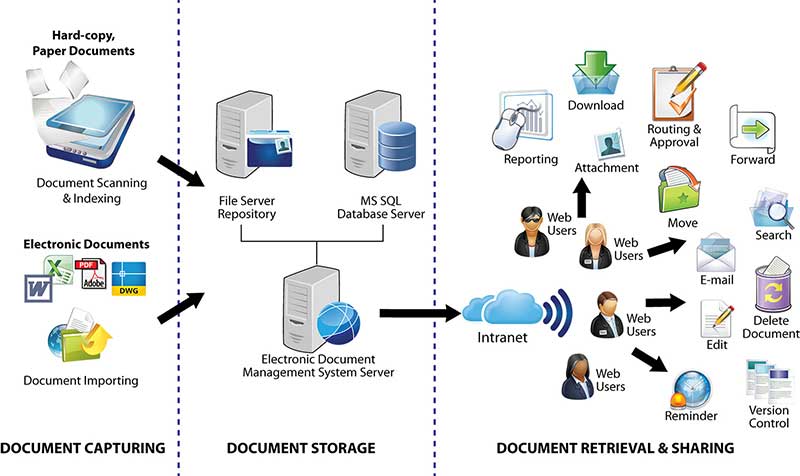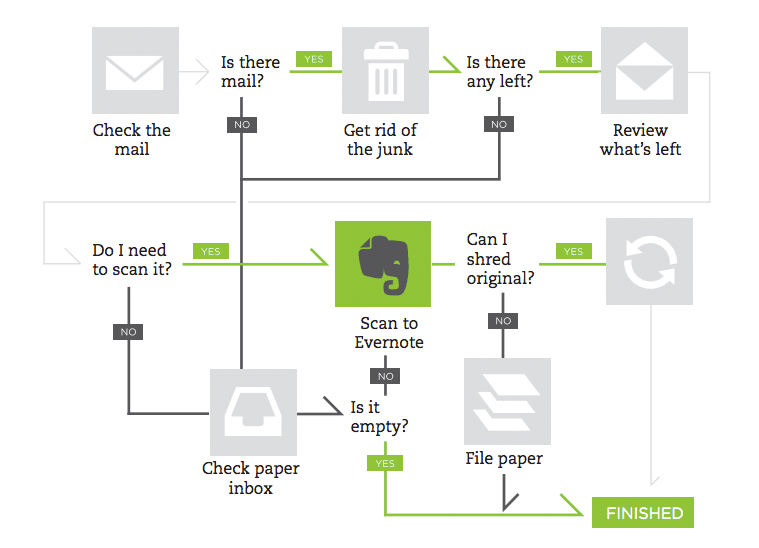PDFelement - Edit, Annotate, Fill and Sign PDF Documents

The history of document management system dates back to the 1980s, when companies first began developing software that can manage paper-based documents. The first systems were able to store only paper documents, printed or published. Years later, developers focused on electronic documents, but the first versions were called document imaging systems, because they stored mostly image file formats. And it took many years, but we are there. Thanks to advance in technology, and bigger awareness in society, we live in an era where electronic document management systems are the norm, not the exception.

The simple explanation is "document management system help businesses organize all of their paper and digital files in one central location where all individuals in the office have access". Microsoft, one of the biggest providers for software defines document management as "the process of applying policies and rules to how documents are created, persisted, and expired within an organization". But you do not need any definition, the two words are simple "document and management". In other words, the goal is to manage documents.
A document management system, in that regard, is a system with electronic filing cabinets that can provide framework for your company how to organize all documents, be it digital or paper documents. DMS work in close integration with scanners, as the goal is to convert paper documents into digital documents. And once you have all your files stored, you can search and find documents easily and quickly. Retrieving documents has never been easier. Here are some of the main aspects of managing documents within the system:
What you need to understand is that companies nowadays are challenged to keep up with all the electronic files and paperwork that comes into the office or the business. Each day, companies receive a bulk of documents, and they need someone or something to organize them. A document management system helps you manage documents, and improves the efficiency of the company.
There are two types of document management systems you can employ. And they are rather self-explained. The first one is the self-hosted system, and the second is the cloud-hosted document system. Let's take a look at both, and list their pros and cons.

Starting from the self-hosted, a system to manage documents aimed at the small and medium businesses. In most cases, small businesses have no need for paying large sums of money for a cloud-based DMS. Using self-hosted document system companies can reduce administration time while increasing productivity. And all that comes with some money savings and full control over the data. With self-hosted DMS, all the data is stored inside the servers of the company. You can store as many documents as the server allows. In other words, a bigger server = more documents. You pay only once, at the beginning, and the one-time cost depends on the number of users. But you need to remember there might be ongoing yearly costs for support and software upgrades.
Pros:
Cons:

While self-hosted DMS are good, if you want to manage documents at the next level, you need a cloud-hosted system. This way, all of your data is hosted in the cloud, and you can access it online. You can log to the software from both the computer and the mobile phone. The difference is you pay a monthly fee for each user in the company. Costs can go as high as $100 per user, depending on the features you want to have. But imagine a possibility where you can access your data from a conference in London, a tea party in Washington, and a cocktail event in Beijing.
Pros:
Cons:
Managing documents within a system is extremely easy. But before you can manage documents, you need to purchase a scanner and scan all the documents. Let's get down to business, and explain step by step how you can manage your documents within the system.

Getting a document management system do manage documents is not the only thing your business needs. If you want to fully revolutionize document productivity and effectiveness of your office, you need a PDF software, and one of the best in the market is PDFelement for Business.
The software is intuitive and very easy to use, allowing users to create, edit, sign PDF documents, convert, merge, and much more. Simply put, you won't find more affordable software. The cost to value ratio is great, and your business will benefit greatly.
The customer service will take care of every problem you might encounter, and cost savings are not the only savings. Thanks to OCR technology, you'll be able to find documents within a matter of seconds. We mentioned you can also sign PDF documents, eliminating the need of printing, signing, and then scanning documents. In other words, you'll be able to sign the next invoice in two seconds, and then forward to the finance department. Wondershare PDFelement can be used by any department in the company, all while allowing departments to share documents between them.
Still get confused or have more suggestions? Leave your thoughts to Community Center and we will reply within 24 hours.